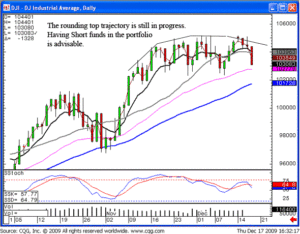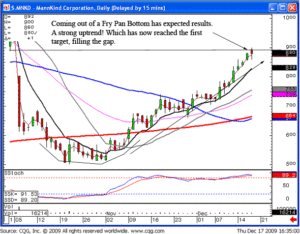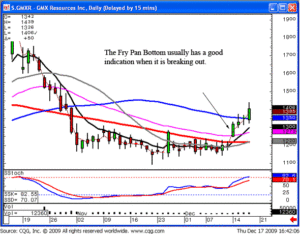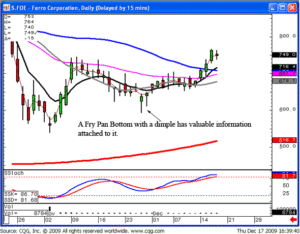Whether you are beginning investing in the stock market or an old hand, knowing and sticking to the basics of stock investing is always a good idea. So, what are the basics of stock investing? The basics of stock investing are that you are buying shares in the ownership of a company. You do not have the right to run the company but you can vote your shares on major company issues and help elect a board of directors once a year. You are not personally liable for company debt or actions and if the company goes bankrupt your claim on the assets of the company is less than that of creditors.
Companies sell stock and give away partial ownership in order to avoid debt repayment and interest payments. The benefits of stock ownership are the receipt of dividends and the appreciation of the value of your shares of stock. Over years and decades stocks in American stock markets have substantially outperformed bank interest as well as government and corporate bonds.
One of the basics of stock investing is the decision to “buy and hold” stock or to trade stock. The buy and hold strategy says that it is really not possible to outguess the market and all you end up doing when you repeatedly buy and sell is make the stock broker rich and repeatedly pay taxes on capital gains. The stock trading strategy relies on individual stocks having their cycles, their ups and downs. Thus, the stock trading strategy says that you can make even more money by market timing than by using the buy and hold strategy. Another of the basics of stock investing is that, even as a small investor, you have a right to have your voice heard at the annual meeting. You can attend and you can speak your mind. However, the number of votes you can cast on any issue is the number of shares that you hold.
Receiving a stock certificate is one of the basics of stock investing. You are entitled to hold this certificate personally. However, you need to keep it in a safe place like a safety deposit box and you need to present it if you selling shares of your stock. Thus a stock investor will usually leave his or her stock certificates with the brokerage through which they buy or trade stock. This is known as holding your shares in “street name.”
How you are paid and how much your stock is worth is usually the most important of the basics of stock investment. Many companies take part of their profit after taxes and send quarterly dividend checks to their shareholders. This is a nice benefit of stock investing, especially for retirees. However, the dividends are taxable and the profit of a US company is taxed at 50 before the dividend is paid. Thus many companies reinvest nearly all earnings in order to grow the company.
Stock appreciation is important. If you invest in a stock that appreciates in value at 10 to 12 percent a year, which is not uncommon, the value of your shares will double every 6 to 7 years. In fact, the company will often “split” the stock and issue two or three shares for one when the stock price goes up substantially. This is another reason to leave your stock in street name. Unlike when you trade stock you need not pay taxes on the long term appreciation of your stock shares until you sell stock. This untaxed appreciation of stock value can substantially improve the exponential growth of stock value.
Market Direction
Candlestick analysis allows an investor to analyze which price movements work most effectively under specific market conditions. The past few weeks have demonstrated a Dumpling Top formation in the Dow. At the same time, the NASDAQ has been trading relatively flat. Most investors acquiesce to the fact that they cannot make a lot of money during a sideways market condition. However, the candlestick investor has the advantage for being able to analyze which price movements/patterns will work effectively during a lethargic market conditions.

DOW
A major facet of investing is putting high profit/high probability situations to your advantage. Many investors do not consider the probabilities when they are entering trades. Candlestick signals/patterns allows an investor to apply the appropriate positions to the appropriate market conditions. As experienced, the past few weeks have provided evidence of a Dumpling Top. As described in last weeks newsletter, the Dumpling Top is formed by indecisive trading that has a rounding top trajectory. The quick oscillating price movements in a Dumpling Top formation make it very difficult to find and establish profitable trades. Fortunately, there are patterns that work extremely well in these market conditions.
The Fry Pan Bottom pattern works very effectively when the market is not showing decisive direction. Although the Dumpling Top eventually produces a very definite result, it’s formation is the result of indecisive trading. Until the decisive result occurs, a strong downward move, the Fry pan bottom pattern does not experience any change of investor sentiment that would result in the termination of a pattern. The longer there is not a strong reversal of a bullish trend, the operative word being ‘strong’, a Fry pan bottom pattern will continue to work effectively.
MNKD was a recommendation of quite of few weeks ago. It demonstrates the inherent strength of the pattern as long as there is no dramatic change in the overall market sentiment. The pattern itself has developed by the gradual buildup of investor sentiment. It feeds upon itself, provided there is no dramatic outside influence that would change that sentiment. Although relatively unexciting, the profits produced by a Fry pan bottom pattern could be significant when the rest of the market does not providing any opportunities.

MNKD
GMXR also illustrates the results of a Fry pan bottom when the market is sluggish. The results of candlestick analysis are not created from highly sophisticated investment formulas.

GMXR

FOE
They are the results of centuries of observations by the Japanese Rice traders. Learning how to use candlestick signals correctly is merely taking advantage of the information Rice traders gleaned from reoccurring price patterns. Understanding the information built into candlestick signals takes the subjectivity out of trend analysis.
Chat Session tonight at 8 pm ET – Discussing the best patterns for these market conditions. Click here for instructions.
Good investing,
The Candlestick Forum Team
Website special reflects current newsletter. If you are reading an archived newsletter you will be directed to Current Website Special.
Speak Your Mind